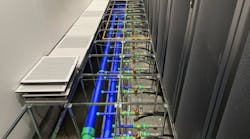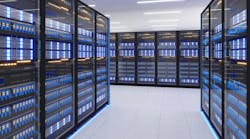The Space-Powered Edge: Amazon, SES Create Direct Connect Via Satellite
Satellite operator SES has joined Amazon Web Services (AWS) Direct Connect Delivery Partner program, providing its customers with flexible and secure access to Amazon’s cloud-based applications and services from nearly anywhere in the world. It also marks Amazon’s first formal satellite broadband relationship, while SES now can deliver single hop cloud connections to AWS and the Microsoft Azure cloud.
Satellite-cloud connectivity is a hot topic as edge computing expands beyond terrestrial network connections and into areas where wireline broadband connectivity is unavailable or impractical, such as a ship or plane. Enterprise and government customers want direct connections from remote locations and moving vehicles with the best network architecture between satellite broadband ground stations and the cloud to reduce latency and increase applications efficiency, as well as to provide backup connectivity for sites in case of a fiber cut or other network issue.
“Achieving AWS Direct Connect Partner status is another milestone in our strategy to provide customers with direct access to multiple cloud providers so they have flexibility to run workloads in different clouds based on region, function, use case or other business factors,” said JP Hemingway, CEO of SES Networks. “Our multi-orbit network provides a combination of global coverage and high-performance, low-latency connections that can get customers’ data into AWS from nearly anywhere.”
Direct Connectivity from SES Ground Stations
AWS Direct Connect provides a dedicated network connection from end-user premises – in this case, SES ground stations – to Amazon data centers. SES will be able to deliver direct connectivity for its customers to AWS regardless of geographical location or local network infrastructure availability through its global network of medium earth orbit (MEO) and geostationary (GEO) satellites.
The SES O3b MEO satellite network, upgrading to O3b mPOWER later this year as newer satellites are added, can deliver broadband speeds up to 10 Gbps at latencies of around 140 milliseconds (ms), substantially faster than GEO satellites with 500ms communication delays. SES’s primary advantage over newcomer LEO broadband constellations like SpaceX and OneWeb is that O3b has been operating in production service for years, while the former service is still in beta and the latter is in the process of launching satellites to provide global coverage sometime in 2022.
Connectivity will go through dedicated fiber connections between SES ground stations and designated AWS “meet me points,” said SES Vice President of Cloud Services Karl Horne. “You’ll see the design template a lot of the major cloud services have when they offer a dedicated connection for optimized performance,” he said, with initial SES-AWS connections made in North America and Western Europe with more connections and geographic expansions taking place as the customer base develops for direct cloud usage.
The only drawback for enterprise and government customers is Ob3 geographic coverage starts to fade out above 50 degrees north and south latitudes and ends at 62 degrees due to the satellite constellation’s positioning in an equatorial belt, leaving the poles uncovered. SES is looking at supplementing the current O3b network with inclined orbit satellites to deliver bandwidth over the polar regions, a capability many nations would like for aviation, maritime shipping, and national security needs.
One Hop to the Cloud
SES’s connections to AWS are part of the satellite operator’s ongoing efforts to deliver one-hop connectivity from anywhere in the world to multiple cloud providers. Last year, SES and Microsoft announced an extensive partnership to connect the two companies with SES building O3b satellite ground stations next to Microsoft Azure data centers and offering connectivity for Microsoft’s Azure Modular Data Center.
Connectivity announcements with other cloud providers should be expected in the future as SES embraces and expands its multi-cloud strategy, one its customers want.
“The cloud is really all about deploying workloads very flexibility and elastically,” Horne said, with its enterprise customers running on multiple clouds for a variety of reasons, including resilience, cost-competitiveness, and the need to tap into the different strengths of cloud vendors from pure-play utility usage to turnkey software-as-a-service (SaaS) availability.
But the announcement isn’t just a win for SES. Amazon now has an edge connectivity option for AWS through the satellite company, enabling its enterprise and government customers a direct path to its services while it works on building its own Project Kuiper satellite network. The company says it will spend $10 billion dollars to deploy an initial LEO constellation of 3,236 satellites but has not announced a timetable to build and launch satellites, leaving Amazon with a need for a satellite partner to provide edge connectivity until Kuiper can provide a home-grown option to complement SES capabilities.
About the Author



